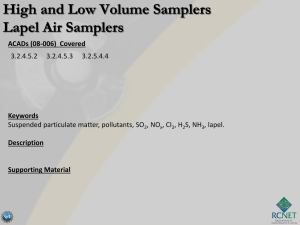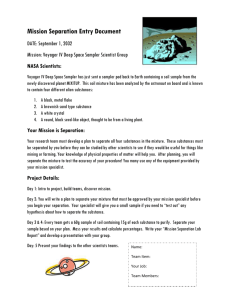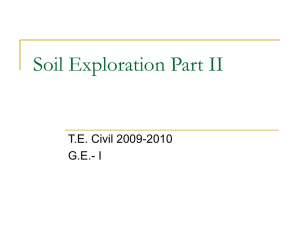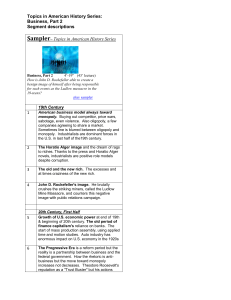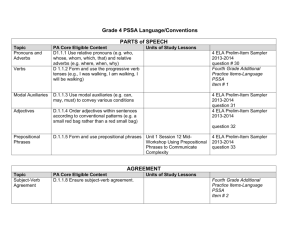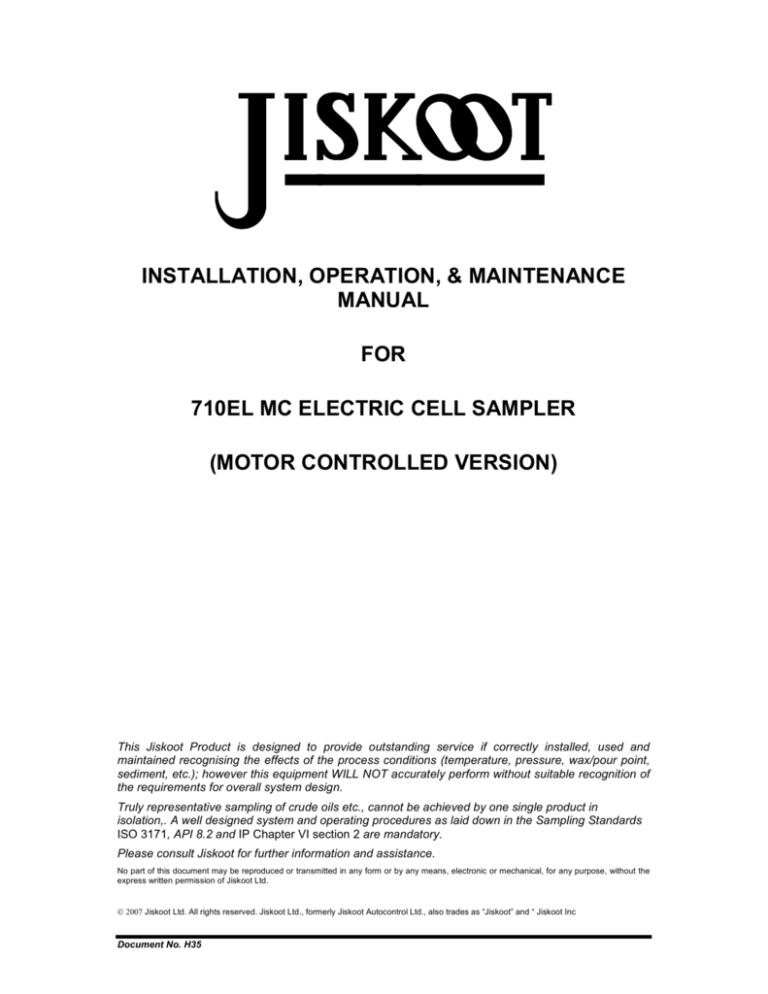
abc
INSTALLATION, OPERATION, & MAINTENANCE
MANUAL
FOR
710EL MC ELECTRIC CELL SAMPLER
(MOTOR CONTROLLED VERSION)
This Jiskoot Product is designed to provide outstanding service if correctly installed, used and
maintained recognising the effects of the process conditions (temperature, pressure, wax/pour point,
sediment, etc.); however this equipment WILL NOT accurately perform without suitable recognition of
the requirements for overall system design.
Truly representative sampling of crude oils etc., cannot be achieved by one single product in
isolation,. A well designed system and operating procedures as laid down in the Sampling Standards
ISO 3171, API 8.2 and IP Chapter VI section 2 are mandatory.
Please consult Jiskoot for further information and assistance.
No part of this document may be reproduced or transmitted in any form or by any means, electronic or mechanical, for any purpose, without the
express written permission of Jiskoot Ltd.
2007 Jiskoot Ltd. All rights reserved. Jiskoot Ltd., formerly Jiskoot Autocontrol Ltd., also trades as “Jiskoot” and “ Jiskoot Inc
Document No. H35
DEF
710EL MC Electric Cell Sampler
TABLE OF CONTENTS
1
Warranty ...................................................................................................................................... 3
2
Introduction ................................................................................................................................. 3
3
Operating Instructions ............................................................................................................... 3
4
Glossary of Special Terms......................................................................................................... 4
5
General Assembly & Bill of Material ......................................................................................... 5
6
Full Functional Description ....................................................................................................... 6
7
Utilities Reference....................................................................................................................... 7
8
Installation Details ...................................................................................................................... 7
9
10
8.1
Sampler Installation ......................................................................................................... 7
8.2
Motor Control Unit (MCU) ................................................................................................ 7
8.3
Motor Rotation .................................................................................................................. 9
Maintenance and Troubleshooting ........................................................................................... 9
9.1
Health and Safety Precautions........................................................................................ 9
9.2
Routine (8 Weekly) Maintenance..................................................................................... 9
9.3
Annual Maintenance (or as determined by site conditions) ........................................ 9
Frequently Asked Questions ................................................................................................... 14
10.1
Sampler Fails to take any sample................................................................................ 14
10.2
Sampler fails to take adequate sample ....................................................................... 14
10.3
Sampler takes excessive sample................................................................................. 14
11
Sub Supplier Information ......................................................................................................... 15
12
Product Specific Drawings ...................................................................................................... 15
13
Recommended Spares List...................................................................................................... 15
T:\Document\710 Sampler RD71015\710 MC\710 MC Cell\Manual\710 MC Cell Rev1.doc
Page 1
DEF
710EL MC Electric Cell Sampler
WARNING!
GENERAL
This unit is designed for connection to hazardous electric voltages.
Ignoring this warning can result in severe personal injury or mechanical damage.
To avoid the risk of electric shock and fire, the safety instructions of this manual
must be observed and the guidelines followed.
The specifications must not be exceeded, and the unit must only be applied as
described in the following.
Prior to the commissioning and installation of the unit, this manual must be
examined carefully.
If the equipment is used in a manner not specified by the manufacturer, the
protection provided by the equipment may be impaired.
WARNING!
ELECTRICAL
INSTALLATION
Installation may only be carried out by skilled electricians and instructed
personnel in accordance with national legislation, including the relevant
standards and, where applicable, in accordance with IEC 79.17 on electrical
apparatus for explosive atmospheres.
The enclosure must not be operated in Zone 0 hazardous areas.
All technical data on the enclosure is to be observed.
Changes to the design and modifications to the equipment are not permitted.
The equipment shall only be operated as intended and only in undamaged and
perfect condition.
The installation of this equipment must meet EN 60079.
A minimum air gap of at least 40mm is required around the whole enclosure.
All cable glands and stopping plugs must be certified according to EN 60079 for
use with an EEx d enclosure in the hazardous area environment into which the
unit is to be installed. Unused cable entries must be fitted with suitable stopping
plugs. Any accessories used for cable entries are made in accordance to EN
60079.
All wires must be terminated, complete with crimping lugs. Unused cores should
be terminated to the earth bus bar.
Page 2 of 20
1
Warranty
This product should be supplied with a warranty card. Please complete and return it to register
for warranty support.
In the event it is missing, to register for support, please contact us on +44 (0)1892 518000 or
support@jiskoot.com, quoting the Jiskoot Order Number or Serial No with the following
information:
♦
Date installed
♦
Full installation site details, including contact details
♦
Maintenance and operator contact details (where different from above)
♦
Product comments/feedback
If the product has been supplied as part of a Jiskoot system or assembly, please complete the
warranty card for the system.
2
Introduction
The 710EL-MC flow-through Electric Cell Sampler provides a means of extracting a sample
from liquids flowing in a pipeline. Designed for applications where instrument air is unavailable,
the 710 Cell Sampler is installed in a 1" nominal bore "by-pass" loop from a main pipeline.
It is crucial that the bypass loop represents the flow in the main pipeline: please refer to ISO
3171, API 8.2, or to Jiskoot for advice.
The 710 Cell Sampler is designed to extract nominal 1cc samples from products ranging from
Natural Gas Liquid at -20°C to crude oil, refined h ydrocarbons, including non-lubricating
products, and non-corrosive chemicals at up to 100°C, operating in a pressure range from 3 to
50 Barg, on viscosities 0.5 to 500cSt. The Sampler can operate in an ambient temperature
range of -20°C to 40°C and has an Ingress Protectio n rating of IP55 (BS EN 60529: 1992).
The Sampler is designed for installation either as a wafer or flanged fitting between 1" 150# or
1" 300# raised face ANSI flanges and can withstand static pressure testing to full flange rating
of 76 Barg.
The Sample Probe is supplied with a 3 phase motor, for use in a hazardous area, certified to
either ATEX Zone 1, Gas Group IIB, T4 or UL/FM Class 1, Division 1, Gas Groups 2, 3 & 4.
Voltage/frequency as specified at order placement. Where only single-phase supplies are
available, an inverter can be supplied to generate the 3 phase supply.
Note:
When requesting assistance or spare parts, please advise the Sampler Model and Serial Numbers to ensure
that the correct options are noted.
3
Operating Instructions
The Sampler must be installed in accordance with the Installation Details, and be connected to
a suitable sample receptacle. All isolating valves in the fast loop or by-pass pipeline from the
main pipeline must be open and the pipe work flooded.
A suitable Sample Receiver must be connected to the Sample outlet.
The sample probe requires continuous power to the 3-phase motor via the MCU (Motor Control
Unit, See Data Sheet S137-0706-2 and Handbook 710 Motor Control Unit (MCU), together with
a signal, indicating sample at the required intervals. Any pipeline conditioning facility must be
active to ensure a representative product is available to the Sample Probe.
Control of the Sample Probe, including changeover of Sample Receivers will be determined by
the type of Sampler Control System being used.
Page 3 of 20
4
Glossary of Special Terms
Grab
-
The action of taking an individual sample (normally 1 or 2 ml) from the
pipeline.
Fast Loop
-
A by-pass pipeline along side the main pipeline through which a proportion of
the product is flowing. This may either be pumped by a dedicated pump, or
utilise the pressure drop across the discharge to suction of Jet-Mix Pump or
across an orifice.
-
Triangle with an exclamation mark
Caution, risk of danger
Page 4 of 20
5 General Assembly & Bill of Material
Page 5 of 20
6
Full Functional Description
The 710EL-MC Cell Sampler operates on grab principles similar to previous Jiskoot Samplers,
but uses an electric motor to provide the motive power.
The speed of the Sampler Motor (1) is reduced through a gearbox to a free-wheel gear and
cam arrangement. The magnet (81) within the Sensor Cam (79) pulses a signal to the control
unit indicating one revolution, which in turn signals disconnection of the power supply to the
motor.
The power to the sampler is controlled by the 710 MCU and sensor mounted on the side of the
gearbox. On receipt of a grab signal from a sampler controller the 710 MCU applies power to
the motor on the cell sampler and the sensor cam revolves, the Cam Follower (50) moves the
Sample Ram (60) downwards past the Balseal (66) located on the top of the Bottom Plug (67),
trapping a sample of product in the void between the Sample Plunger (65) and the Bottom
Plug. Continuing downward motion depresses the Sample Plunger, forcing the trapped sample
past the gap between the Plunger stem and the Bottom Plug and opens the Check Valve (74).
The sample is then expelled through the Connector (76) via the external Check Valve to the
sample receiver.
Page 6 of 20
As the Cam continues to revolve, the Cam Follower moves the Sample Ram away from the
Bottom Plug and back up to the dwell position, at this point the sensor cam position is detected
by a sensor mounted on the side of the gearbox and power is removed from the motor. Both
the 710 MCU and sampler are now ready for the next grab to be initiated, allowing fresh
product to pass in the area between Sample Plunger and Bottom Plug.
7 Utilities Reference
AC Power
Available Motor Voltages* 400 VAC +10%/-6% 50/60 Hz
Power Consumption
Maximum Grab Rate **
90 Watts (60 Watts Typical)
50 grabs/minute with a 50Hz 3phase supply
* Other voltages are available upon request.
**Maximum grab rate is dependent on supply frequency and process
conditions (i.e. line pressure and fluid viscosity)
8 Installation Details
8.1
Sampler Installation
The 710EL-MC Cell Sampler is designed to be bolted as a wafer fitting between 1" ANSI 150#
or ANSI 300#RF flanges and can withstand static pressure testing to full flange rating.
The 710EL-MC Electric Cell Sampler weighs approximately 16 kg and the pipeline into which it
is located will need to be adequately supported.
The Sampler will be supplied with the Motor facing across the Sampler pipeline, but may be
rotated through 30° steps by removing the 4 off M5 Cap Head Screws (48) and turning the
Mounting Tube/Gearbox Assembly. Under no circumstances must the Lock Nut (44) be
loosened and the Mounting Tube rotated in the Gearbox Housing as this will disturb a
critical internal alignment.
The Motor is selected to suit the specific application and will require connecting to the 710 MCU
via suitable glands and cables appropriate to the area classification. ATEX certified motors are
supplied with an M20 cable entry; FM certified motors have a ½"NPT entry. Where electrical
connections are to be made through conduit, flexible conduits should be used.
External earth tags are provided on the motor to permit adequate bonding of the equipment to
the site earth/ground.
The MCU should be connected to the power feed via a suitably fused isolator switch. An
Emergency Stop Button is fitted to the MCU with the option of adding an additional remote
Emergency stop closer to the Sample Probe providing a means of shutting the Sample Probe
off in an emergency.
Emergency Stop Button
Jiskoot recommend that an Emergency Stop Button should be fitted close to the Sampler to
provide a means of shutting the sampler off in an emergency. If a Jiskoot 710 MCU has been
supplied the emergency stop can be wired into this unit.
Electrical Isolation
For safety and maintenance reasons a lockable electrical 3-phase isolator should be fitted in
the 3-phase supply to either the sampler of Motor Control Unit. The 24VDC supply must also
have a means of disconnection or facility to be turned off.
8.2
Motor Control Unit (MCU)
IMPORTANT
Please refer to the 710 Motor Control Unit (MCU) for specifc installtion
instructions.
The MCU should be mounted adjacent to the Sampler, and connected to the Sampler via a
suitably sized and protected cable.
Page 7 of 20
During installation or Commissioning it is necessary to check the rotation
of the motor. See Section 8.3.
CAUTION
The Sampler must not be operated with either the Shroud covering the
Mounting Tube or the Gearbox Cover removed (Details to check the
correct rotation of the motor are detailed below).
The ¼" Swagelok Sample Outlet Port in the Bottom Plug (76) must be
connected to the Sample Receiver System using ¼" or 6mm stainless
steel tubing via either an in-line Check Valve or a Jiskoot Line Balanced
Relief Valve and a relief valve as shown in the diagram below - Failure to
fit an external check valve may result in the Sampler continually
discharging product from the outlet due to the line pressure exceeding the
internal check valve setting.
3 PHASE
FROM
CUSTOMER CONTROL
FROM CONTROL SYSTEM
(PULSE)
SAMPLE PULSE 25-400ms
24 V
GRAB
INDICATION
IS SIGNAL
3 PHASE
FLOW
LINE BALANCE RELIEF VALVE
ALTERNATIVE TO IN-LINE CHECK
VALVE
FLEXI-HOSE
BEFORE / AFTER
CHECK VALVE
SAMPLE
INLET
IN-LINE CHECK VALVE
SET TO 5 BAR ABOVE
LINE PRESSURE
LINE
PRESSURE
SAMPLE OUTLET
DRAIN
OVER-PRESSURE RELEIF VALVE.
SETTING DEPENDANT UPON
SAMPLE RECEIVER SYSTEM
CHANGE-OVER VALVE
FOR RECEIVERS
The Check Valve will normally be set to 5 Bar above the maximum line pressure, ensuring that
this is sufficient to allow for any additional pressure increase created by thermal expansion
when any isolating valves are closed and the effects of trace heating and or solar energy. If the
cracking pressure is set too low, the valve may open under adverse conditions, causing the
Sample Receiver System to overfill and the sample to leak through the relief valve to
atmosphere.
Page 8 of 20
Where line-balanced, high-pressure sample receivers are being used (i.e. where the sample is
being collected at, or close to line pressure), and the installation uses the Swagelok R3A or any
similar valves unaffected by back pressure, to avoid placing unnecessary load on the Sampler
seals, the Check Valve should be set to operate at 1 Bar. If the valve is found to lift and fill the
Sample Receiver due to pressure surges, this setting may be increased slightly.
The relief valve fitted to the sample line is to provide protection to the Sampler in the event of
the sampler being operated against a blocked sample line, e.g. without a sample receiver being
fitted or with a full sample receiver. This relief valve should be within the maximum pressure
rating of the receiver system, but may need to be increased slightly to allow for momentary
pressure surges as the sample is being taken.
Ensure that lengths of tubing connecting the sampler to the receiver system are kept to a
minimum to minimise "dead" i.e. trapped volume (long lengths of tubing also create extra back
pressure and premature seal wear), and that the sample travels downhill at a minimum angle of
15 degrees from the Sampler Outlet to the Receiver to avoid water traps. The sample outlet
piping may require heat tracing to prevent blockage.
8.3
Motor Rotation
Note:
Before commissioning three phase versions of the Sample Probe is it essential to check that the
motor will revolve in the correct direction. The 710 EL MC is designed for optimum performance,
running in the correct orientation.
Connect power to the Motor, momentarily apply power to the motor. The motor must rotate
anticlockwise when viewed from the fan end. To reverse direction, change over two phases of
the motor supply.
9
Maintenance and Troubleshooting
9.1
Health and Safety Precautions
The 710 Sampler may be used in applications involving carcinogenic or other hazardous
products. Care must be taken to avoid contamination by any product trapped within the
internal components that may be released as the Sampler is stripped down.
Overhaul of this equipment should only be undertaken by suitably trained and
competent service personnel utilising correct P.P.E. at all times.
9.2
Routine (8 Weekly) Maintenance
It is recommended that the Sampler be lubricated on an 8-week cycle, using a high melting
o
o
point, general-purpose grease suitable for temperature range of -20 C to +200 C such as
Electrolube.
Lubricate the motor-end of the gearbox by screwing in the Lubricator (35) fitted to the top of the
Motor Adapter (6) until the gearbox is heard to run quietly. When the Lubricator has been fully
screwed in, remove the cap and re-pack the Lubricator with grease.
Note :Avoid greasing the Sampler excessively, excess grease may solidify and prevent proper
operation of the sampler.
9.3
Annual Maintenance (or as determined by site conditions)
The 710EL-MC Electric Cell Sampler is designed to operate for a period of about 1,000,000
grabs or 12 months before a major overhaul, however this service interval will be affected by
the type of product being sampled, particularly the amount of particulate matter such as sand,
and therefore can not be guaranteed. When used in crude oils with high levels of sediment or
from mixed carrier shipments, the failure interval cannot be determined and may be random.
The service intervals will therefore need to be determined from the experience gained on the
particular application.
The Sampler should be removed from the pipeline and taken to a clean area for servicing.
Page 9 of 20
NOTE: It is essential that soft vice jaws are used whenever components are required to be
held, and that all components, particularly those with sealing faces are thoroughly
cleaned of dirt and other contamination by degreasing and drying prior to re-assembly.
If any of the sliding surfaces are damaged, leakage will occur from the seals.
All joints, 'O' Rings and moving parts must be lubricated on assembly using a general
purpose grease such as Castrol “Spheerol B2” grease or an equivalent lithium based
water-resistant grease.
The motor and gearbox components must be lubricated with a high melting point grease
such as “Electrolube”.
Jiskoot recommend that to prevent seizure, all screwed components are lubricated with
copper grease on assembly.
A Special Tool Kit, Part No. 45-0174-00, is available to assist in fitting some components and
seals. Failure to use the correct tools may damage seals and other components, and will have
a direct effect on the future performance of the Sampler.
Page 10 of 20
9.3.1
Sampler Seal Replacement
Bottom Plug Assembly
The Bottom Plug Assembly is unscrewed from the Cell Sampler Body using the 'C' Spanner
provided in the Special Tool Kit. Note the location of any shims located between the Bottom
Plug and the Cell Sampler Body. These will be retained on the Bottom Plug by 'O' Ring
(68).
To strip down and overhaul the component parts, carefully unscrew the Male Connector (76)
being prepared to catch any of the spring loaded components of the Check Valve Assembly
(Items 73, 74 and 75) as they are released.
Note :
The removal of the Sample Tube Plunger is not recommended unless the sealing surface is worn or
damaged, as the adjustment of the plunger affects the sample size.
Using small wire cutters, carefully cut off the two Balseals (66) from the Sample Plunger and
the pedestal of the Bottom Plug, taking care not to damage the surfaces of the components.
Examine all components for signs of wear and thoroughly clean to remove any debris.
Discard all seals.
Fit new Balseals after first warming them in hot water to make them more pliable.
Grease and slide the Balseal over the Sampler Tube Plunger and onto the Bottom Plug
ensuring that the open spring end faces away from the body of the Plug. Press the seal
firmly into the groove using fingers.
Page 11 of 20
Grease and slide the Balseal onto the Sample Plunger ensuring that the open spring end
faces towards the shaft of the Plunger. Press the seal firmly into the groove using fingers.
Unscrew the Check Valve Insert (71) and remove the Spring (70) to expose the Split Nut
(69).
If the Sample Tube Plunger is to be replaced, using the Split Nut Driver and depending upon
the style of the Sample Plunger, either the circlip pliers supplied in the Special Tool Kit or a
5.5mm AF Spanner, unscrew the Split Nut (69) from the end of the Sample Plunger (65).
Replace the Sample Plunger in the Bottom Plug, and locate with the Split Nut (69), ensuring
that the free play in the Sample Plunger is exactly 6.5mm (measure with a vernier). This
setting will determine the size of the sample taken per grab.
Using a new Spring (70) and Dowty Seal (77), refit the Check Valve Insert (71) into the
Bottom Plug. Reassemble the Check Valve Assembly and refit into the Bottom Plug with the
Spring (75), greasing threads with copper grease. Apply copper grease to the Male
Connector and replace, also using a new Dowty Seal (77).
Apply copper grease to the threads of the Bottom Plug. Replace the 'O' Ring (68) taking
care to refit any shims found when the Bottom Plug was removed, and screw the Assembly
into the Cell Body.
Capture Tube Seal Replacement
Note the orientation of the Motor/Gearbox Assembly to the Cell Body.
Page 12 of 20
Rotate the plastic cover on the side of the Mounting Tube (43) to expose the Guide Sleeve
(52) and its Retaining Screw (53). Remove the Guide Sleeve from the side of the Cam
Follower and the 4 off Cap Head Screws (48), securing the Mounting Tube (43) to the Cell
Body Adapter (55).
Lift the complete Motor/Gearbox Assembly from the Cell Body Adapter and Cam
Follower/Sample Ram Assembly.
If the Cell Body Adapter has slots for use with a 'C' Spanner, hold the Cell Body (58) in a
soft jawed vice and unscrew the Cell Body Adapter using the 'C' Spanner provided in the
Special Tool Kit. Alternatively, where there are no slots provided for using a 'C' Spanner,
hold the Cell Body Adapter in a soft jawed vice and unscrew the Cell Body from the Adapter.
Remove the Cam Follower/Sample Ram Assembly, complete with the Seal Adapter (59),
Seal (56) and 'O' Ring (57) from the Cell Body.
Hold the Cam Follower in the soft jaws in a vice and unscrew the Capture Tube Retaining
Nut (51).
Carefully remove the Circlip (78) from the end of the Sample Ram (60), taking care to catch
the Capture Tube Retaining Nut and Spring (46) as they are released. Remove the Seal
Adapter (59), Seal (56) and the 'O' Ring (57).
Examine the Sample Ram Assembly for wear where it passes through the Seal (56) and
replace if worn.
Using a small screw driver or similar tool, extract the Slydring (62) from the Cell Body and
replace, using the Sample Ram Assembly to finally form the new Slydring into shape.
Fit new Seal (56) into the Seal Adapter and replace 'O' Ring (57), greasing the seal surfaces
on assembly.
Replace the Seal Adapter Assembly over the Sample Ram, replace the Spring (46), Capture
Tube Retaining Nut ((51) and secure with Circlip (78).
Apply copper grease to the threads of the Capture Tube Retaining Nut and screw into the
Cam Follower. Tighten the Capture Tube Retaining Nut.
Grease the Cam Follower/Sample Ram Assembly and carefully slide the Assembly into the
Cell Body.
Apply copper grease to the threads of the Cell Body and the Cell Body Adapter, and
reassemble (handtight).
Slide the Motor/Gearbox Assembly over the Cam Follower and replace the Guide Sleeve
(52) and Screw (53) to secure the Cam Follower in the Mounting Tube. Secure the Gearbox
in position with the 4 off Cap Head Screws (48); ensuring the Motor/Gearbox Assembly is in
approximately the same position as originally found.
9.3.2
Motor, Gearbox Assembly
The gearbox assembly will normally only require to be stripped down, old grease removed
and then reassembled.
Motor/Gearbox Replacement
Due to the need for special tools and the fine tolerance of the internal gears, field servicing
or replacement of the Motor and Gearbox is not recommended. In the event of failure of
these components, the entire Sampler should be returned to Jiskoot for repair.
If the Motor or Gearbox are required to be replaced on site, detailed assembly instructions
will be supplied with the spare parts.
Sensor Overhaul
The only regular maintenance required is to remove as much of the old grease from the
Housing as possible, ensuring the sensor is clean.
Page 13 of 20
Remove the 4 off M5 x 16 Cap Head Screws (5). The Gearbox Cover (4) is a push fit onto
the Outer Bearing 21 and may be removed by rotating the Cover against the Gearbox
Housing and pulling off with a rocking motion. DO NOT LEVER APART.
Note the location of the Bearing Pre-Load Spring(s) (47) inside the bearing housing of
Gearbox Cover.
Lightly grease the Gearbox Shaft front Bearing and Gearbox Housing face and fit Gearbox
Cover to Gearbox Housing with 4 off M5 x 16 Cap Head Screws.
Sensor Overhaul
The sensor is sealed and shall require replacement if failure occurs.
Remove the Gearbox Cover as described above, unscrew and withdraw the sensor (82) and
clean off old grease.
Ensure that the sensor is not damaged and replace if necessary.
Replace the Gearbox Cover as described above.
10 Frequently Asked Questions
10.1 Sampler Fails to take any sample
Check product is available to sampler
Check all valves are open
Check motor is running - feel or listen for operation.
Check Sampler Controller is demanding a grab and that any interposing relays are operating
satisfactorily.
Check that Sample Receiver is not either full, blocked by wax, or isolated (Carefully loosen ¼"
connections in sample discharge tubing to test).
If the above are satisfactory, than the Sampler will require a change of internal seals.
10.2 Sampler fails to take adequate sample
Check Sample Receiver is not full or the sample outlet piping blocked through waxing.
Check the external Check Valve fitted to Sampler Outlet Adapter is set to 5 Bar above line
pressure for normal low-pressure receiver systems and to 1 Bar where high-pressure sample
receivers are being used. If pressure is too high, excessive wear will be caused to the Sampler
internal seals.
Check that the relief valve fitted to the sample discharge lines is not passing.
Check the sensor cam is sensing and not clogged through excessive grease in the mechanism.
Ensure that the Sampler Controller is not either demanding too fast a sample grab rate (60
grabs per minute maximum at 50 Hertz), or that the signal to the controller is too fast.
If the above are satisfactory, than the Sampler will require a change of internal seals.
10.3 Sampler takes excessive sample
Check the external Check Valve fitted to Sampler Outlet is set to 5 Bar above line pressure for
normal low-pressure receiver systems and to 1 Bar where high-pressure sample receivers are
being used. If pressure is too low, then the internal Check Valve may be lifting allowing sample
to pass at all times.
Ensure that the Sampler Controller is not either demanding too fast a sample grab rate (60
grabs per minute maximum at 50 Hz), or that the signal to the controller is too slow, and not
signalling for the engagement of the motor.
If the above are satisfactory, than the Sampler will require a change of internal seals, permitting
the Sampler to grab continuously
Page 14 of 20
11 Sub Supplier Information
The following sub supplied items are used in the 710EL-MC Electric Cell Sampler:
•
Euromotori Motor Series ASA 56, selected to suit the application specific hazardous
area and power supply requirements.
•
Pepperl & Fuchs Type MC60 Sensor (selected to suit application specific hazardous
area requirements and power supply).
Neither component contains any user serviceable parts.
12 Product Specific Drawings
Series 710 Cell Sampler Installation Details
D24036
Series 710 Cell Sampler General Arrangement Drawing
B23935
13 Recommended Spares List
When requesting assistance or spare parts, please advise the Sampler Model and Serial
Numbers to ensure that the correct options are supplied.
Part/Sub- Assembly
Commissioning
Spare Parts Kit 45-0128-00 comprising:
Item No.
Description
Part No.
32
36
47
56
57
62
66 (2 off)
68
70
74
75
77 (2 off)
78
Spring
‘O’ Ring
Spring
40-0201-00
37-0702-00
40-0207-00
37-0730-00
37-0733-00
37-0518-00
37-0540-00
37-0043-00
40-0205-00
36-1229-00
40-0084-00
37-0403-00
37-0582-00
Seal
‘O’ Ring
Slydring
Balseal
‘O’ Ring
Spring
Check Valve Tip
Spring
Dowty Seal
Circlip
Special Tool Kit 45-0174-00 comprising:
Part No.
Description
Split Nut Driver
36-2051-00
External Circlip Pliers
36-2042-00
'C' Spanner
36-2000-00
4mm Allen Key
36-2045-00
Page 15 of 20
1
1
1 Year
Operation
1
2 Year
Operation
1
-
-
Disclaimer
Whilst Jiskoot Limited has taken every care in the preparation of this document, it cannot
accept responsibility for printing errors or omissions and does not warrant that it is correct and
comprehensive in every particular. Equipment supplied should always be operated by persons
with an appropriate level of skill and training.
Jiskoot Limited shall not be liable for incidental or consequential damages resulting from the
furnishing, performance or use of this material.
Jiskoot pursue a policy of continuous improvement, and information given herein may be
updated without notice.
Further, this information is proprietary to Jiskoot Limited, and must not be disclosed to any third
party except as may be required to operate the equipment supplied in accordance with the
purposes for which it was sold by the persons properly licensed to operate it.
1
Updated Motor Controller Information
N.McGee
P.Whittle
10/10/2007
0
First issued – Based 710 Cell Rev8
N.McGee
P.Whittle
21/03/2006
Issue
Revision History
Issued
Notes
Page 16 of 20
Approved
Date
def
Tunbridge Wells, Kent, TN1 2DJ, UK
Tel +44 (0)1892 518000, Fax +44 (0)1892 518100
Email: support@jiskoot.com
def
www.jiskoot.com
Houston, TX77014, USA
Tel +1-281-583 0583, Fax +1-281-583 0587
Email: jinc@jiskoot.com

